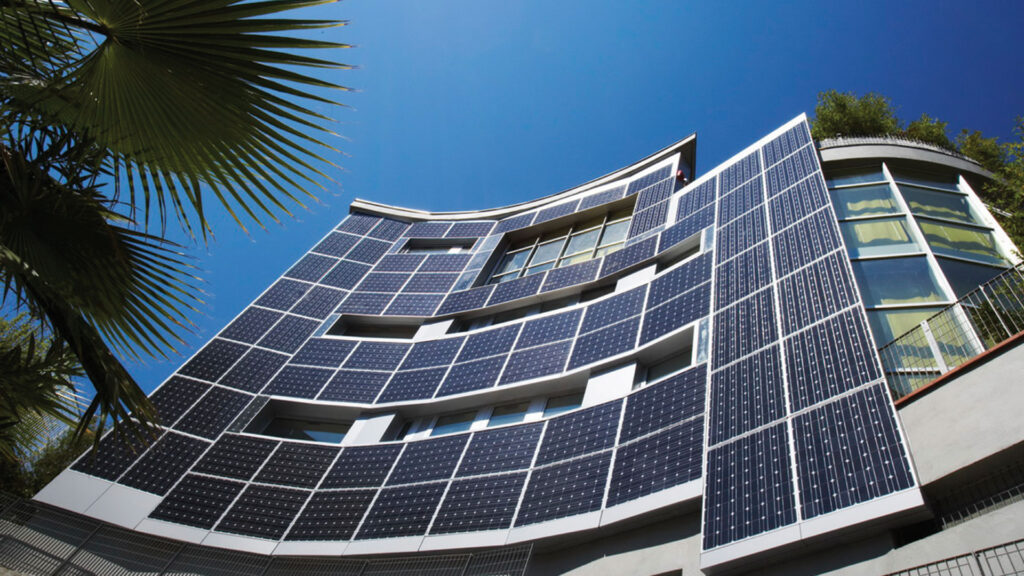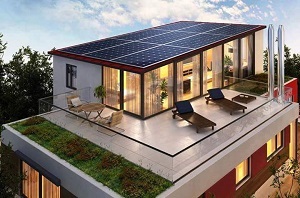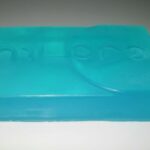- What is IBDP?
- Applications
- Technologies
- Advantages of PVIB systems
- PVIBT – A class of PVIB
- PVIB Technology
- Financial disadvantages
- Lack of integration
 What is IBDP?
What is IBDP?
Building-integrated photovoltaic (BIPV) systems are solar energy products or systems that are seamlessly integrated into the building envelope, making up a part of the building such as a roof, façade or windows. PVIB systems are integral components of building envelopes and convert solar energy into electricity while performing building envelope functions such as :
- protection against the weather (waterproofing, sunshade);
- thermal insulation;
- noise protection;
- daylighting;
- security.
 Applications
Applications
PVIB systems can be installed during the construction phase of a building or as part of renovations to an existing building and replacement of envelope components. The building environment allows the integration of PVIB systems in several ways. In general, there are three main application areas for PVIB systems:
- roofs (i.ex. shingles, tiles, skylights) (see Figure 1);
- facades (p. ex. siding, curtain walls, windows) (see Figure 2);
- integrated external systems (p. ex. balcony ramps, sun protection systems) (see figure 3).
Figure 1 : PVIB installation on a roof
Figure 2 : PVIB installation on a facade
Figure 3 : External PVIB solar protection system
Technologies
Commercially available PVIB modules use crystalline silicon (c-Si) or amorphous silicon (a-Si), calcium telluride (CdTe) and copper indium gallium selenium (CIGS) thin-film technologies. With most technologies, semi-transparency can be achieved by spacing the solar cells apart or by using a thin transparent layer. On the other hand, the more transparent the module, the less efficient it is, since the photovoltaic layer captures less sunlight and produces less electricity.
Advantages of PVIB Systems
The advantages of PVIB systems are numerous. PVIB systems produce clean electricity on site without requiring more land space, but they can also affect a building’s energy consumption by using daylight and reducing cooling loads. PVIB systems can, therefore, contribute to the net-zero energy of buildings. By transforming roofs and façades into energy producers, PVIB systems are the only building materials offering a return on investment. Besides, the diverse uses of PVIB systems provide many opportunities for building beautification for architects and building designers. As well, building owners benefit from lower electricity bills and a “green” and “innovative” image.
PVIBT – A Class of PVIB
A class of PVIB systems includes PVIB systems with thermal energy recovery, i.e. PVIBT systems. These systems simultaneously produce heat and electricity on the same building surface.
When air is used as a means of heat recovery (PVIBT/y), the extracted thermal energy can be used directly for low-temperature uses (for example preheating of fresh air) or, by means of a heat pump, for high-temperature uses (p. ex. space and water heating). The main advantage of PVIBT systems is that they produce more energy than PVIB systems for a specific area. Besides, in a heat recovery situation, the PV cells will be colder than those on a PVIB roof without heat recovery, thus improving the efficiency of the module.
PVIBT Technology
PVIB Potential
A study in 2006 revealed a significant market potential for PVIB technology in Canada, indicating that approximately 71.34 TWh of electricity could be generated by the installation of this emerging technology in residential, commercial and institutional buildings.
Over the last decade, the trend towards multi-storey glazed buildings and technological advances in flexible, coloured, transparent and energy-efficient photovoltaic materials have led to a broader range of applications for PVIB systems.
Financial Disadvantages
At present, the value of PVIB technologies is not fully understood. In order to demonstrate the profitability potential of PVIB systems, case studies of PVIB installations are developed, highlighting the advantages of PVIB technology as an energy production technology, but also as a building envelope component that provides a return on investment.
Besides, research and development activities are being conducted to evaluate the cost-effectiveness of heat recovery from PVIB systems to produce thermal and electrical energy using the same building area. The scope of heat transfer improvement strategies aimed at increasing the value of recovered thermal energy is also evaluated. Simulation and testing activities are also carried out to develop optimized engineering concepts for the integration of PVIBT/y systems with HVAC systems.
Lack of integration
PVIB systems produce energy, but they are also components of building envelopes. To help building designers understand the performance of PVIB and PVIBT systems in these two functions, detailed and straightforward models are developed to predict the performance of PVIB and PVIBT systems in different configurations.
Existing PVIB software tools on the market are also being evaluated to better inform architects, consultants, engineers and researchers about their functionality and limitations. As a next step, design guidelines will be developed to enable engineers and architects to integrate PVIB systems into a building, ensuring performance and safety.
In 2017, a survey of PVIB system experts was conducted to understand better the current constraints to the development of the PVIB market. The results of this survey will help guide future research and development efforts in PVIB. The results will also be used to initiate an exchange between the shareholders of relevant PVIB systems on how to overcome barriers to market development of PVIB technologies.

 What is IBDP?
What is IBDP? Applications
Applications









